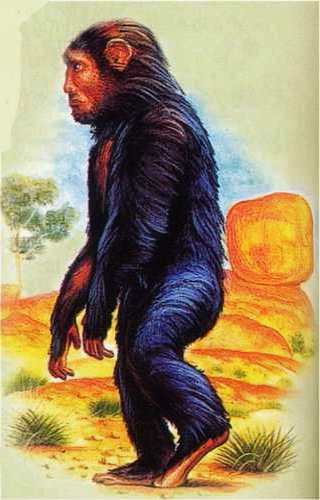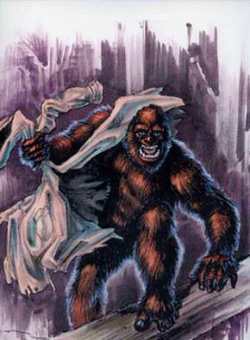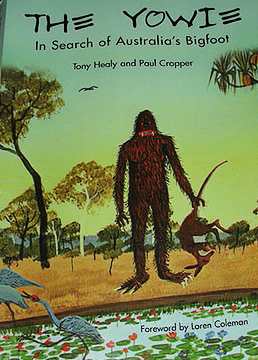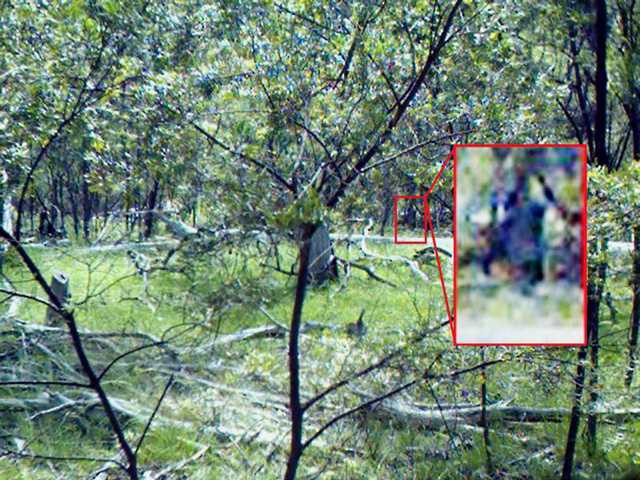Having delved into the mythical and legendary roots of the Yowie mystery within ancient Aboriginal Australia, alongside fossil and archaeological evidence indicating a diverse nature of the “hairy man,” this exploration is grounded in the physical descriptions provided by early European settlers. These accounts, coupled with contemporary reports gathered by the author from across Australia, promise to further affirm the varied nature of the “hairy man.”
Our examination reveals a spectrum of “hairy men,” encompassing both giant and modern human-sized beings, as well as diminutive forms known as “little hairy men” found in Aboriginal traditions nationwide. The collective term “hairy man” applied by Aboriginal people includes smallish forest-dwelling Australoids, exemplified by the Atherton Tableland ‘pygmy’ Aboriginals, with similar forms purportedly inhabiting mountainous forestlands further south, including Tasmania, and even Australia’s interior.

The narrative extends to the intriguing mention of small, ape-like forms documented in Aboriginal traditions. Distinct from the young of larger creatures, these are claimed to be a definitive pygmy-size race with herbivorous and omnivorous attributes, some even displaying tool-making and fire-making skills. This chapter endeavors to shed light on these “little hairy people” before delving into modern-day evidence concerning larger relict hominid and hominoid manifestations of the “hairy man.”
The term “hairy man” broadens its scope, encompassing all non-Aboriginal races sharing the continent, irrespective of their actual hairiness. In navigating the Yowie mystery, the author grapples with a multitude of hominid and hominoid forms, unifying various giant and smaller-size “hairy men” scattered across Australia under a single race. This book serves as a compilation of reports and evidence suggesting that primitive survivors from the early stages of human evolution persist in remote corners of the continent.

Among these enigmatic tales, the dense rainforests of Queensland’s far north hold a persistent mystery involving the ‘Junjdy’ or “little hairy red men.” Often confused with the Yowie in folklore, these beings, also known as the Birranbindins, emerge as lost pygmy tribes of far north Queensland. Described as small, black-skinned hairy natives, approximately 1 to 1.3 meters tall, they inhabited forests, subsisting on vegetable food and forest animals. The Aborigines, misunderstanding their nature, relentlessly hunted and killed the Birranbindins, compelling them to retreat deeper into the mountains. In truth, these pygmies were shy and timid, avoiding confrontations with the Aborigines.
Scientific misconceptions once portrayed these forest natives as a separate race preceding the Aborigines, owing to their negroid-like features. However, their characteristics and stature align more with Australoid traits, related to the former Tasmanian Aborigines. The ‘Junjdy’ or “little hairy red men” were distinct from coastal and inland Aborigines, forming a connection with the Yowies. This chapter strives to unravel the complexity surrounding these smaller Australoids before delving into modern evidence of larger relict hominids.

The ‘Junjdy’ traditions extend across far north Queensland’s mountain ranges, reaching into the Gulf country, Arnhem Land, and even southern Queensland, far northern New South Wales, and the mountainous areas north of the Blue Mountains. Reports of pygmy-size natives span vast territories, including Kanangra Boyd National Park, south-west of Katoomba, and Central Australia.
Coastal Aborigines first shared knowledge of the ‘Junjdy,’ or Birranbindins, approximately 125 years ago. These little beings possessed a tribal name, Birranbindin, and a tribal language known as Yidigii. As settlers experienced raids on farms, theft of vegetables, and stock killings, conflicts ensued, prompting calls for police protection. Historical accounts, such as Carl Lumholtz’s “Among Cannibals,” shed light on early interactions with these diminutive forest tribes in the Atherton rainforest, emphasizing the need for police intervention to address foraging raids on settlers’ crops.

